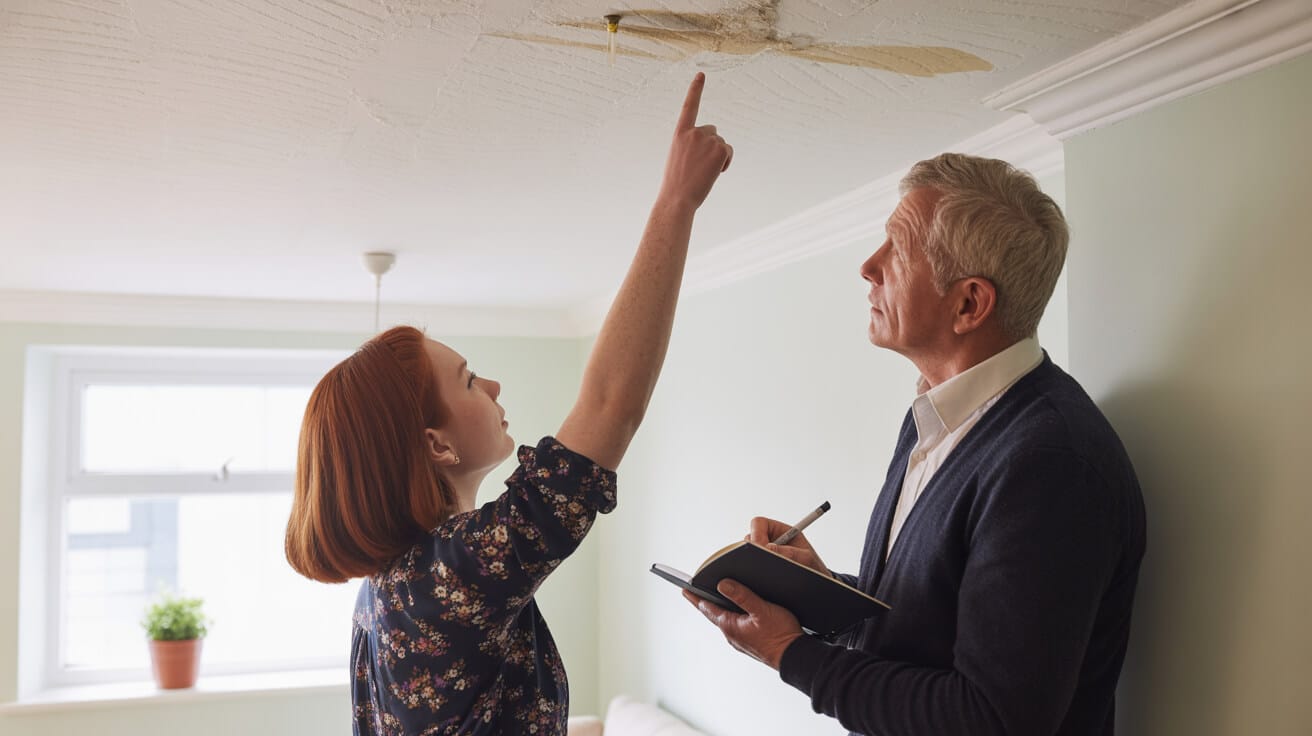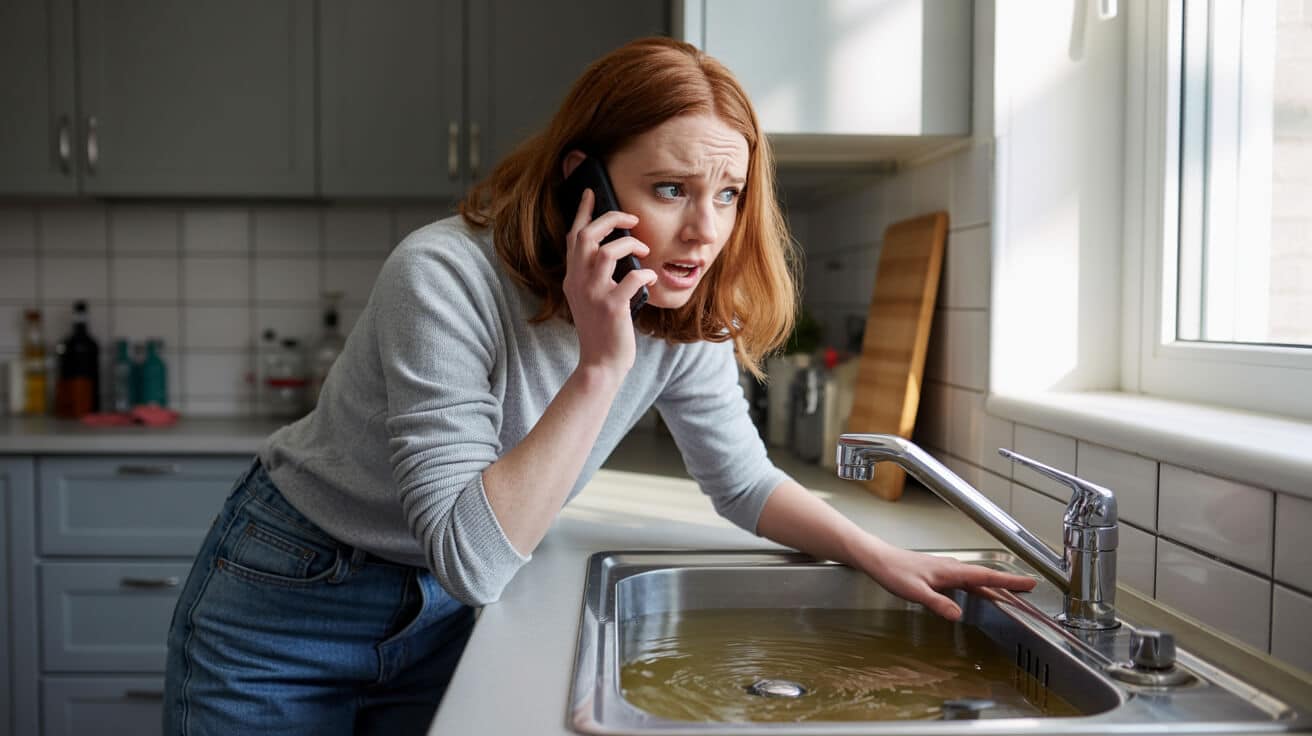 Step by Step Guide to Conducting Legionella Risk Assessments
Step by Step Guide to Conducting Legionella Risk Assessments
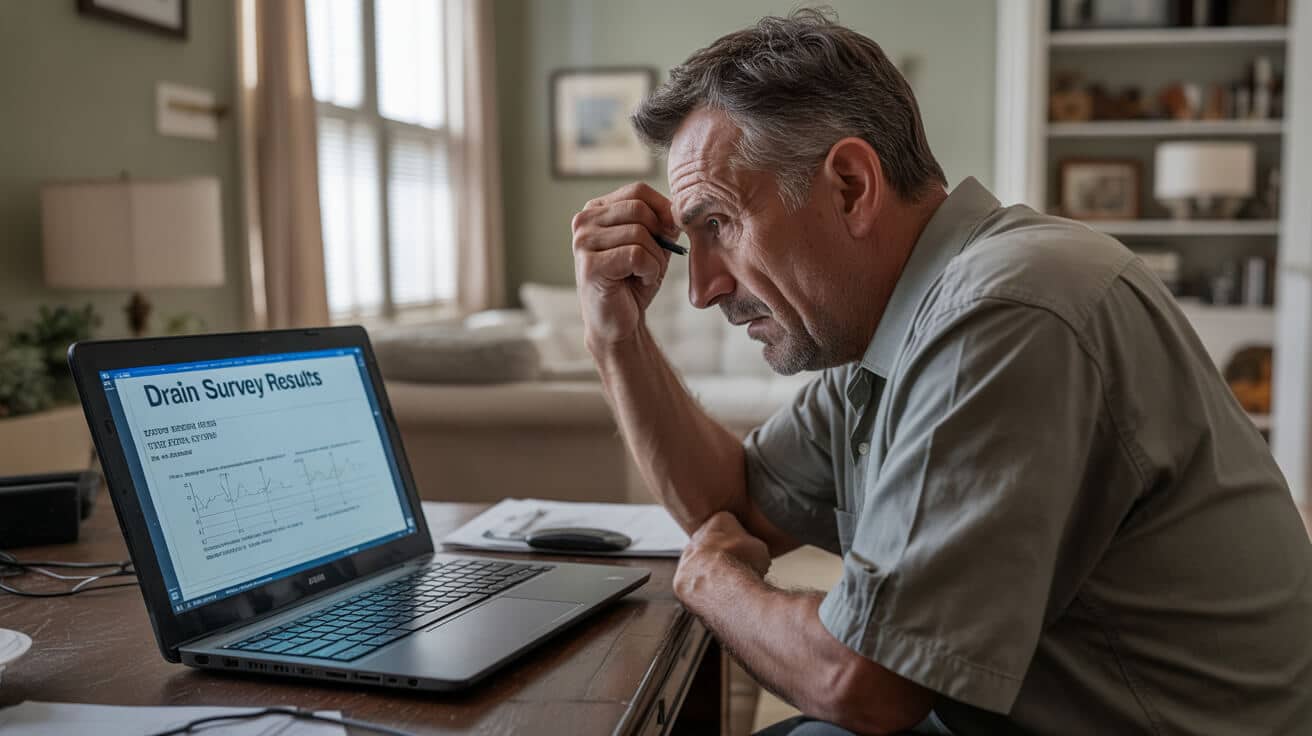
Why Legionella Isn’t “Someone Else’s Problem”: Are You Safe—Or At Risk?
Legionella risk isn’t just about industrial cooling towers or hospital outbreaks—it’s about every building with a hot or cold water system, be it a modest flat, sprawling office block, or your local community centre. If you own, let, manage, or maintain property in the UK, legal and reputational responsibility sits with you. Too often, people assume risk management is for “high-rise managers” or “commercial landlords.” Reality is less forgiving: cases have emerged in new-build homes, well-managed flats, care facilities, and offices large and small when compliance dulls or documentation lags.
Missed checks and silent paperwork gaps create more danger than any stray bacteria ever could.
Legionella is opportunistic, breeding wherever water rests in under-used pipework, drops below safe temperatures, or cycles through neglected tanks. You might believe a new instal or basic system offers immunity—yet have you verified that water never stagnates in an overlooked spur, or that you could produce the latest risk assessment and logbook if an inspector arrived today? From the Health and Safety at Work Act to COSHH, UK regulations demand that anyone “in control of premises”—not just facilities managers, but everyday landlords, agents, and property teams—conduct and act on regular risk assessments.
A true Legionella risk assessment benefits far more than health; it shields you against costly litigation, satisfies insurance, and publicly signals your commitment to proactive duty of care. With a 10-15% mortality rate for untreated Legionnaires’ disease, and adverse press headlines only ever a call away, minimising exposure risk is non-negotiable for every responsible property professional (NHS/UKHSA).
Who Underestimates Their Risk—and Who Pays Later?
It’s not the headline offenders who most often face compliance censure—it’s the reputable letting agent blindsided by a dead leg, the diligent landlord who skipped a log entry, or the school manager who thought “routine” was good enough. Legionella exploits human error: poorly circulated pipes, abandoned spare bathrooms, and fallback routines broken by renovations or tenant changeovers.
The systems that seem simplest often hide the costliest lapses.
Competence beats “gut feel” every time. A resident becomes ill, a council officer shows up, and suddenly your comfort with a risk register or old maintenance schedule evaporates. Courts and insurance underwriters side with clear, up-to-date, well-mapped evidence—never with “best efforts” that can’t be proven.
What Does the Law Actually Require—and Why Do So Many Miss the Mark?
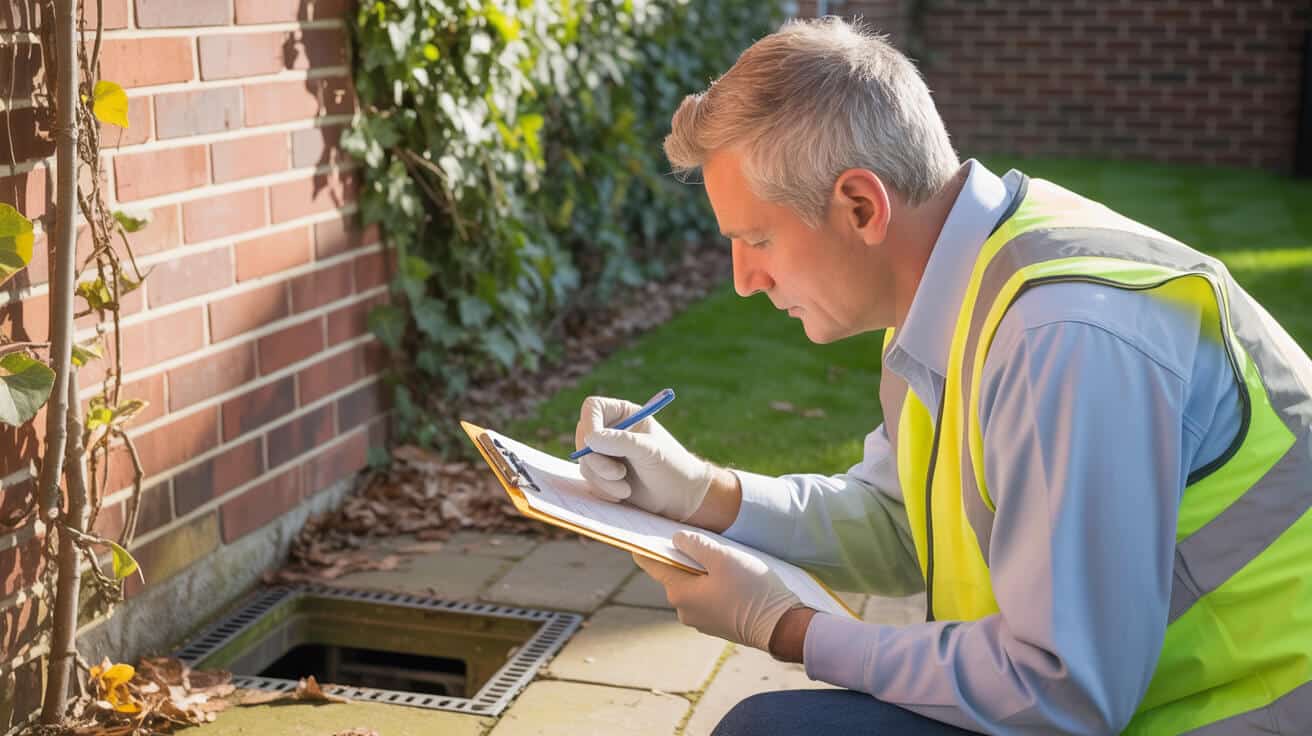
UK law sets a clear threshold: any “person in control of premises” holds duty to manage Legionella risk (HSWA 1974). Landlords, letting agents, managers, business owners—if your name’s on the lease, the council expects you to have answers. COSHH regulations go further, specifying risk assessment as a documented, proactively managed process—not just a box-tick once a year.
Ignorance won’t shield you from investigation—inspectors and insurers both expect an auditable assessment and live evidence of control.
Where do so many trip? By treating compliance as a one-off. A forgotten reassessment after a property repair, long pauses in a flat’s occupancy, unnoted staff changes in block management—all create risk exposure, not just for fines but for denied insurance and long reputational shadows.
How to Meet Regulator Expectations—Table: Key Duties and Deliverers
Here’s how responsibilities—and gaps—usually break down:
| Compliance Duty | When? | Who Can Deliver? |
|---|---|---|
| Initial risk assessment | Before let/occupation, or annually | Competent person |
| Record-keeping | Continuous, live | Responsible person |
| Update after works/changes | After any repair, instal, move | Owner/agent/contractor |
| Provide access to records | On inspector or tenant request | Owner or agent |
| Temp/flow monitoring | Weekly/monthly as appropriate | Owner/staff/contractor |
Skip any column and risk a fine—or worse, the legal and ethical burden if someone becomes ill due to your oversight (WaterSafe, HSE Landlord Guidance).
Most legal gaps are exposed by missing records, not hidden pipework—paperwork is always the first audit checkpoint.
Regulators don’t expect heroics; they do expect method. If the paper and digital trail is weak, no amount of “good intentions” will save you.
DIY, Delegate, or Go Professional: Who Should Assess Your Legionella Risk?
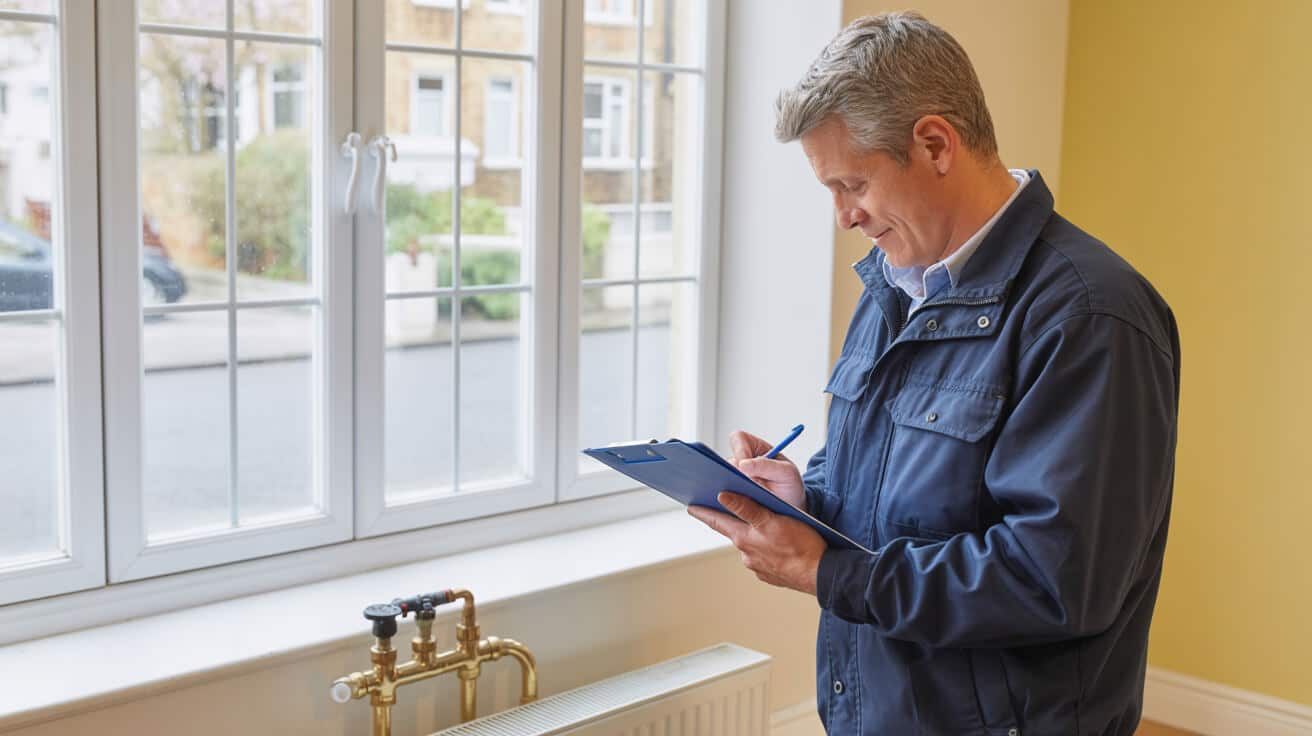
You don’t have to call in consultants to fulfil compliance—but you do have to demonstrate understanding, diligence, and up-to-date reporting. For a single buy-to-let with plain distribution, you can often self-check with a good template and honest record—provided you can explain pipe routes, show you’ve mapped outlets, and keep logs current. Scale and complexity, however, see the bar rise: multi-unit blocks, care environments, and commercial sites with fluctuating use all demand professional, G3 or WaterSafe-accredited input and documentation.
Choosing the Right Legionella Path for Your Property
- Simple domestic systems (single flats): Internal checks work if you’re methodical, trained, and records are crystal-clear.
- Larger portfolios / vulnerable tenants / complex layouts: G3, WRAS, or WaterSafe certification, formal print and digital mapping, and specialist sign-off become essential.
- Recent works, recurring low-use outlets, failed audits: If you’ve flunked before, or risk unknowns due to layout or history, bring in a professional for holistic review.
Accountability can’t be delegated. Whether you handle checks or hire an expert, the legal record remains under your name; insurers and councils seek “the responsible person,” not a scapegoat. Maintain records, sign off after changes, and make sure professional interventions—like those offered by Plumbers 4U—are fully annotated and added to your logbook.
Most failed audits result from overestimating how simple your system is, or underestimating the cost of incomplete paperwork.
Water System Mapping—Why Most Legionella Assessments Fail Before They Even Start
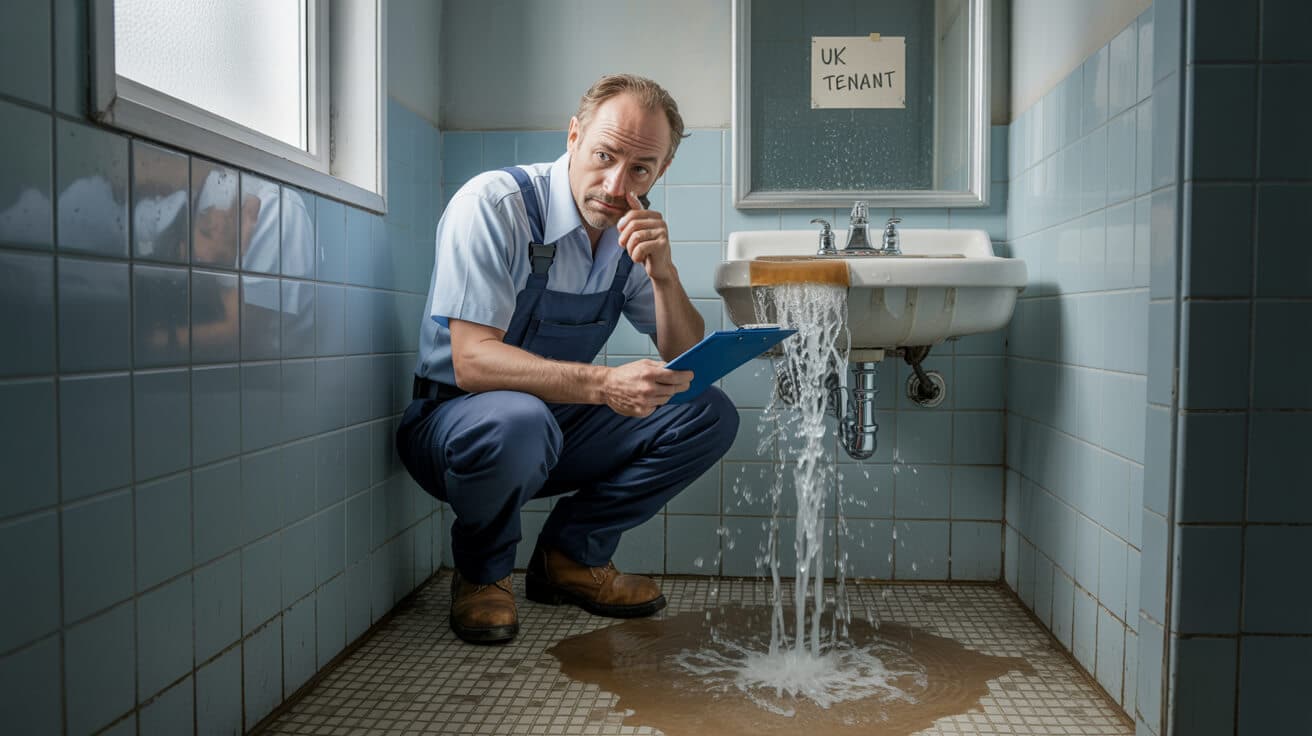
Risk assessment means mapping every route water travels—because bacteria don’t respect convenience. It’s easy to forget an old capped branch after a kitchen renovation, a cold tank hiding in a loft, or a hose point at a far corner of the garden. Fail to map, and you’ll fail an audit before the thermometer comes out.
Mapping unmasks hidden dangers—water forgotten is water at risk.
Bulletproof System Mapping: Procedures That Survive Any Audit
- Start at the main supply: Confirm all visible valves; log and label ball valves, stopcocks, and check for capped tails.
- Catalogue every outlet: Systematically list taps, showers, outside bibs, utility sinks—don’t omit “occasional use” points.
- Identify all storage components: Mark out every tank, cylinder, and overflow; note insulation and access for regular checks.
- Highlight unused/capped branches: Identify dead legs on the map; schedule removal or at least weekly flushes.
- Check appliance connections: Include washing machine valves, softeners, and fridge feeds.
- Record infrequent-use areas: Flag guest rooms, outbuildings, and extensions; review turnover and risk.
- Maintain live photo-diagrams: Each installation, upgrade, or tenant switch requires an updated plan—store in a digital folder or property log.
A living map transforms your compliance from reactive to proactive; it means even a surprise spot check by your local Environmental Health Officer lands in your favour.
What “Passes” a Modern Audit? Moving Beyond the Old Thermometer-Only Approach
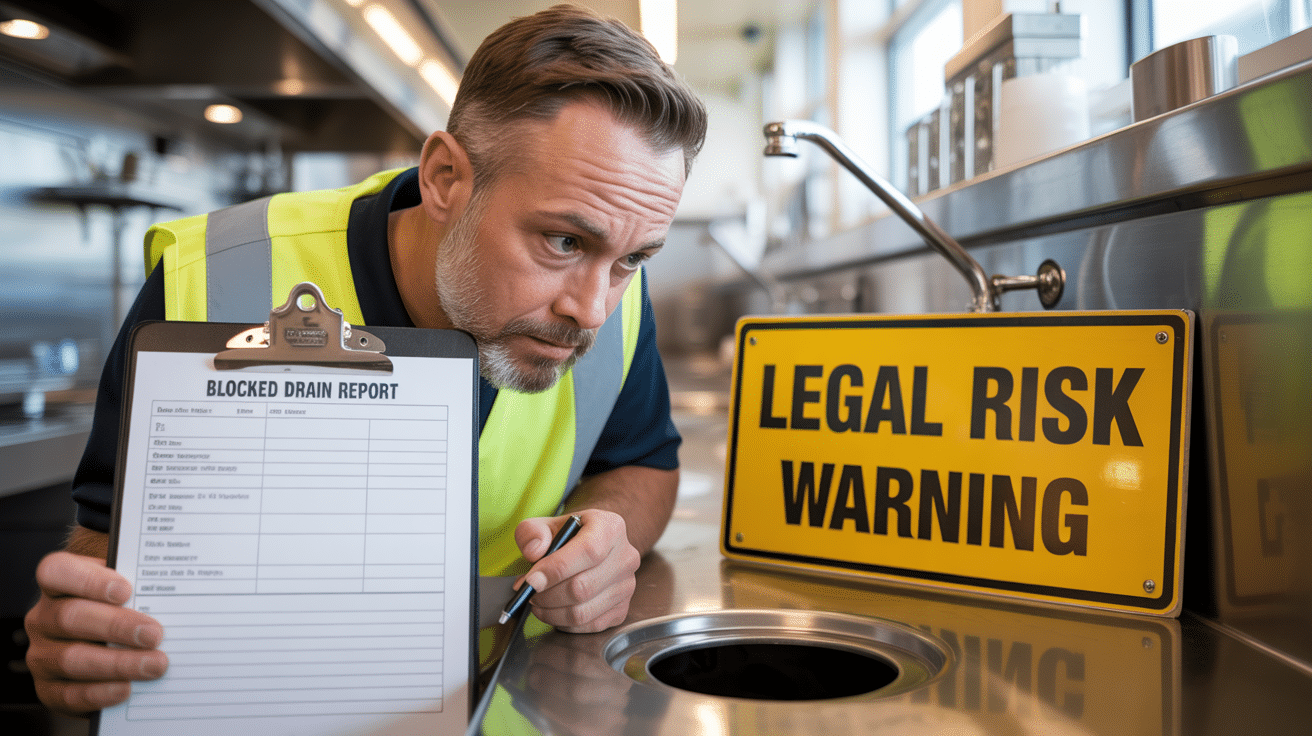
Gone are the days when scrawled temperature logs at a sink sufficed. Inspectors now scrutinise process, not just numbers: initials at every checkpoint, mapped locations, signed-off incidents, and up-to-date photos. Lacking proof on any hot or cold outlet is a fast-track to a reinspection or restriction notice—no matter the true risk status at your property.
Your Compliance Checklist—From Thermometers to Signed Logs
- Cold taps (every outlet): Must achieve ≤20°C after a 2-minute run; entry should show date, time, and initials.
- Hot water taps: Should reach ≥50°C within one minute; the cylinder outflow must hit at least 60°C.
- Seldom-used outlets: Log weekly flushes, with an alert if any station remains unused after two cycles.
- Tank and cylinder checks: Annually confirm lid, insulation, soundness; attach a dated inspection note.
- Incident or repair events: Note service/repair with detail, date, and the engineer’s credentials (stick in a photo).
- Responsible person: Identify and sign for each visit, including when property switches agency or tenant.
- Professional interventions: Only valid with credentials attached in log and plan up to date.
Table: What’s Audited at Each Checkpoint?
| Water Point | Audit Target Value | Immediate Fix If Failed |
|---|---|---|
| Cold tap | ≤20°C after 2 min run | Investigate, insulate pipes |
| Hot tap | ≥50°C after 1 min run | Service / adjust stat |
| Cylinder outflow | ≥60°C | Schedule maintenance |
| Low-use outlet | Flushed & logged weekly | Add alert, flag for review |
| Dead leg | Removed/isolated/logged | Plan removal, interim flush |
Audit-grade logs are about rhythm, not complexity: the fuller, clearer, and more current your documentation, the simpler every inspection becomes.
Where Bacteria Actually Hide: Uncovering the Invisible and Dealing With Them
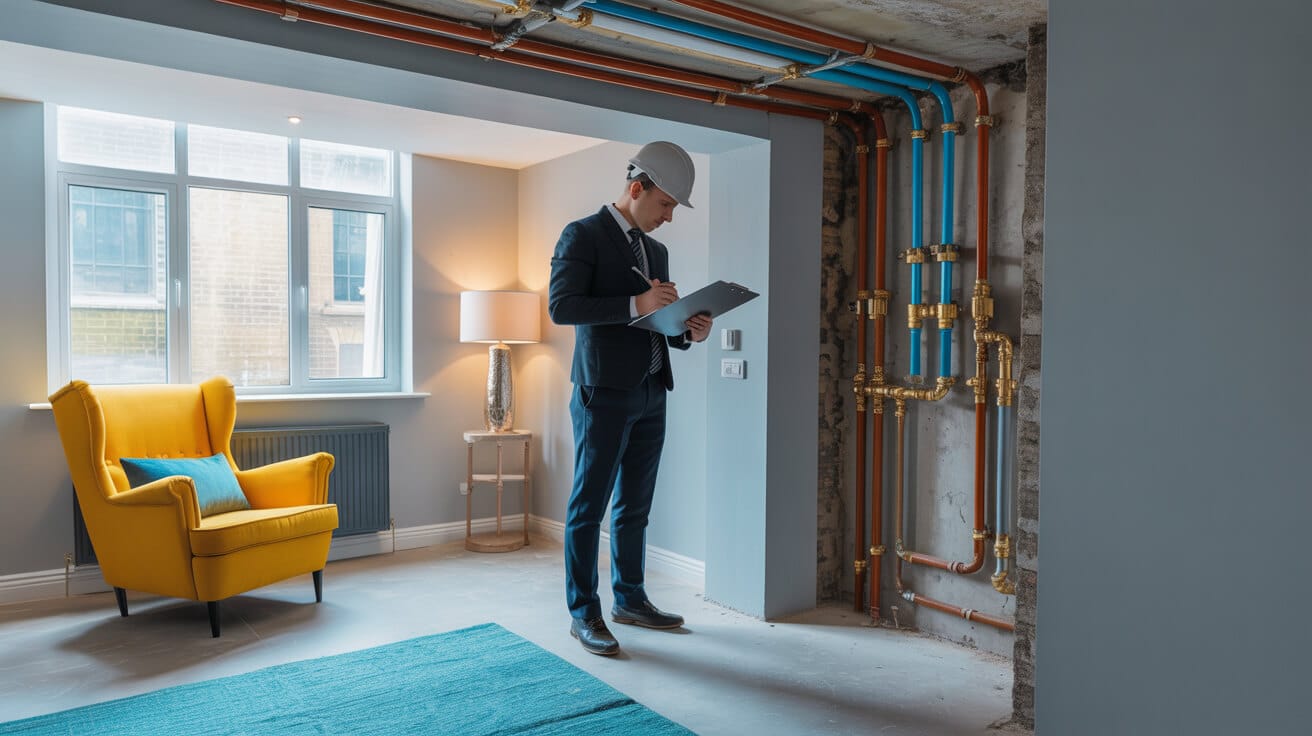
The routine kitchen tap isn’t usually where Legionella lurks. Look instead to the “shadow system”—spur pipes left live after flat upgrades, insulated loft tanks in properties rarely climbed into, neglected en-suites or guest showers, and hoses left connected but barely used. Stagnation is the enemy, and routine brings security.
Inspect, Flush, Remove, or Document—Target the Lurking Zones
- Dead legs: Remove from live system or, failing that, label and schedule compulsory flush.
- Unmonitored tanks: Annual open-lid inspection for debris, fit and insulation, with before/after photo.
- Showers & hoses: Run at full temp before/after absences; scale deposits and black hoses trigger replacement.
- Rarely used outlets: Weekly logged flush mandatory; gift every outlet a “tick” schedule near the tap or in the digital log.
Water that keeps moving is rarely hazardous—outlets left dormant are far riskier than overused ones.
Make the fix easy to repeat and easy to check—a “culture of compliance” means even rotating staff, agencies, or tenants see the same prompt, same schedule, same clear accountability.
The Audit-Proof Logbook: Tactics for Building a File That Protects You
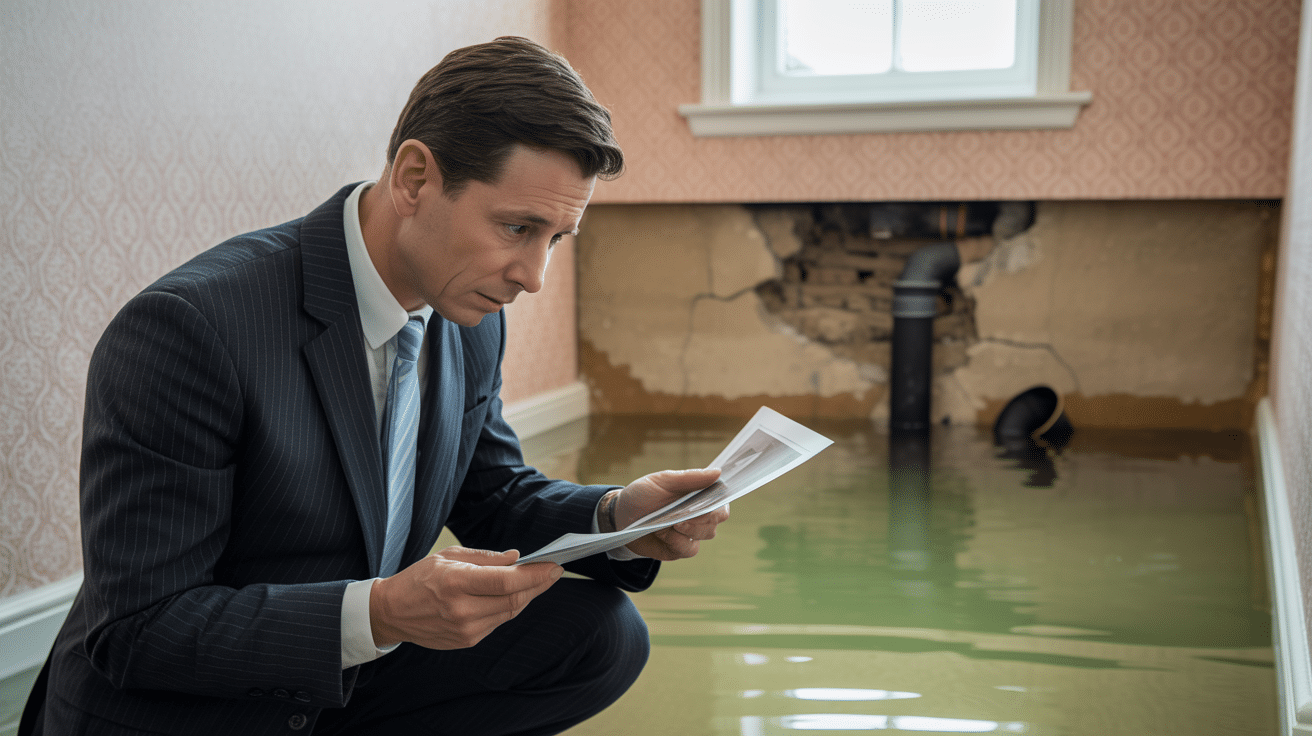
Every auditor and insurer wants proof, not popularity. The best Legionella logbook is a living diary—clear, up-to-date, doubly signed for changes and repairs, credentials attached directly, and accessible on demand.
- Responsible person named (with details): No initials without email or phone.
- System diagram or photo: Each zone/room, overlaid with outlet codes and date of last update.
- Servicing and repair history: Date, scope, part number or code—and signed statement from vendor, not just a stamp.
- Sign-off for events: New tenants, works, or upgrades clearly logged by date and party.
- Credentials and proof: Attach files, photos, G3 or WaterSafe cert snap and number, for every professional visit.
- Reminders and recurring tasks: Calendar or app interventions, auto or manual—visible to every agent/user.
- Storage standards: On site for single lets; GDPR-compliant cloud for portfolios.
Aim for two years’ retention for one property; five or more for portfolios, or where historic audits and reviews get tricky.
Table: Common Logbook Gaps—And The Quickest Fixes
| Flaw | Audit Result | Reliable Fix |
|---|---|---|
| Missing contact | Auto non-compliance (fine) | Add name, details |
| Post-work gaps | Flagged for risk | Supplement log page |
| Faded hand-drawings | Doubtful status, review fail | New annotated photo |
| Unsigned entries | Ignored by audit | Require signature |
| Locked away records | Non-acceptance by inspector | Site/cloud access |
Consistency trumps complexity—simple, up-to-date evidence outpaces expensive, complex software if it stays current.
Building a Culture of Compliance: Review Calendars, Trigger Events, and Playing to Win

Tick-box compliance fails more because of inertia than malice: unrecorded repair, missed flush after a tenant gap, or a new appliance installed minus a fresh map. The law expects rhythm, not wizardry: regular tasks, alarms set, and responsible agents briefed.
The Owner’s Playbook: Never Miss a Review
- Annual full system review: Minimum legal requirement; after every change of works, let, or occupancy, add a fresh check.
- Weekly/monthly tasks: Set digital calendar or maintenance app reminders—these automate healthy habits and catch every “oops moment” before inspectors do.
- Transition handovers: When engineers or agencies shift, update records with fresh responsible person, reset calendar alerts.
- Multi-property owners: Use a digital dashboard—a Plumbers 4U speciality—so managers, contractors, and portfolio agents never misplace a log or flinch at an audit.
Audit confidence isn’t bought at renewal—you earn it, page by page, day by day.
A robust compliance culture requires rhythm, a little training, and a feedback loop—not specialist knowledge. Make “audit proof” a badge of pride, not pain.
Why Choosing Plumbers 4U Makes Legionella Compliance the Easiest Part of Your Job
Peace of mind comes from system, not luck. Plumbers 4U delivers more than promise—our G3, WRAS, and WaterSafe-accredited pros provide property-specific mapping, signed digital/print logs, and relentless aftercare. You don’t just pass an audit; you build a reputation for vigilance and quality.
Where others leave you a checklist, we deliver ready-to-show audit logs, annotated schematics, and a responsible person on every page.
With Plumbers 4U, you get:
- Total system mapping and walkthrough—engineer led, step by step:
- Instant post-visit audit log with digital and paper records for your agent/insurer:
- Automated reminders and scheduled risk reviews for all future checks:
- Professional sign-off at every intervention; full walk-throughs and Q&A for you and your team:
- Jargon-free reporting, clear priorities—so every stakeholder, from landlord to school manager, knows what’s safe, pending, or risk-tracked:
Owners of large or remote portfolios can rely on our digital dashboards for up-to-the-minute oversight, team assignment, and historic records—no lost logs, no handover headaches.
How to Move From “Vulnerable” to “Audit-Ready” Instantly
- Download our logbook template—built for audit-proof, council-ready compliance
- Access a pictorial guide to what inspectors look for, free with every first assessment
- Book a triage call for legacy or multi-property setups
- Receive a pre-audit checklist and digital review reminders with every assessment
Our focus: make compliance a source of pride—and a selling point—for every property you manage, not another risk or regulatory burden.
Get Legionella Risk Under Control—Contact Plumbers 4U Today
Don’t let paperwork gaps, invisible plumbing risks, or regulatory confusion damage your business, compliance, or reputation. Plumbers 4U’s WRAS, G3, and WaterSafe-certified engineers deliver Legionella assessments for every kind of building—domestic, block, school, or commercial site—built for audit, insurance, and stakeholder confidence from the first visit.
Here’s what you secure:
- Transparent, line-item quoting—no “hidden extras;” the full job, scope detailed
- Rapid, fully inspector-ready reports—digital/downloadable, plus hard copies on request
- Digital reminders for periodic reviews; annual plus every “trigger event” accounted for
- Walkthroughs at every assessment, answering questions and setting your team up for safe systems long-term
- Easy, one-call booking with always-on follow up—from the same certified engineer every time possible
Don’t let silent system gaps or missed records cost you. Make Legionella compliance a point of trust and a badge of diligence. Book your risk assessment with Plumbers 4U today—and turn audit anxiety into confidence that gets noticed.
Frequently Asked Questions
Why is Legionella risk assessment considered a personal legal duty, and how does this affect your day-to-day property management?
Legionella risk assessment isn’t a box-ticking exercise—UK law makes you personally responsible for every decision, file, and failure, even if someone else handles the workload. The Health and Safety at Work Act 1974 and ACoPL8 mandate that anyone who controls property—homeowner, landlord, agent, facilities manager—is “the duty holder.” This means you carry the legal weight for both action and oversight, and can’t outsource blame if something is missed.
The hammer always falls on the duty holder, not the contractor the moment records or routines fall short.
What does this responsibility actually look like in practice?
- You need a clear, current written risk assessment for every rental, commercial space, or managed building—whether you have a five-bedroom house or multiple apartment blocks.
- Even if you bring in a managing agent, caretaker, or specialist contractor, your own name stays at the top for compliance. Audit trails must show you haven’t just hired out the task, but double-checked the evidence.
- Every change—new tenant, new staff, plumbing upgrade—means a new review, fresh logs, and revisiting your liability. Ignoring this leaves a potential paper trail straight back to you if a Legionella case occurs.
- Paperless logbooks, digital photos, and named role logs are now standard. Plumbers 4U delivers all of these in one file, so if the council or insurers come calling, your name and records match up every time.
Why does the law go this far?
After several high-profile outbreaks, UK regulation evolved to prioritise personal accountability over “contract and forget” culture. Between 2021–2024, more than half of Legionella enforcement actions cited not bad plumbing, but missing or unsigned duty holder records (HSE, 2024). For real peace of mind, your operational workflow must include risk review, paperwork check, and routine update—even if a specialist does the work.
Double assurance, not double trouble: today’s risk is not delegating tasks, but assuming delegation means you’re protected. In reality, the only protection is a live, traceable, and time-stamped evidence file with your name on it—exactly what you’ll get, automatically, from Plumbers 4U.
What documentation, logs, and templates do you need to truly satisfy a Legionella audit or insurance investigation?
No matter how good the plumbing, it’s paperwork that carries you through an audit. Legal compliance is all about being able to instantly show the who, what, when, and how—point by point, for every system and each year on record. Auditors, councils, and insurers require a living log, not just a printed folder of “pass” slips.
The strongest pipe isn’t worth much if you can’t prove the person, date, and fix at every point of your water system’s chain.
Key components of a bulletproof Legionella evidence file:
- Named Responsible Person Register: This isn’t optional. Each site requires a list naming everyone involved, complete with qualifications and signatures. A letting agent’s blanket statement won’t hold—every log needs to be individually attributed.
- System Schematic or Annotated Photo Record: From stopcock to outside hose, every tank, tap, valve, and dead leg must be marked. Auditors expect digital files or photo maps, especially for larger sites.
- Temperature and Asset Logbook: Dated readings, location IDs, and safe/unsafe results for each outlet—every week, every check, clear and uncompromised.
- Monitoring and Flushing Scheme: The schedule is the proof—a living list with weekly, quarterly, and annual tasks, signatures, and explicit tick-off or action-reports.
- Remedial/Repair Records: Not just “fixed,” but what was done, which part replaced, when, and who signed off. Missing this step is the leading cause of audit failure.
- Review Registration and Archive Policy: Track every round of updates, agent swaps, or staff change. A robust policy asks for digital retention of all logs for at least two years (preferably five), with access on demand within the hour.
Templates and digital tools for UK law:
- Official sample logs are available (HSE, 2024): (https://www.hse.gov.uk/legionnaires/sample-monitoring-log-book.doc?utm_source=openai)
- With Plumbers 4U, you receive a real-time, digital compliance pack—schematic, logs, and all audit data pre-loaded and easy to hand off or share in seconds.
Just as a well-serviced car carries a full stamped book, a fully compliant water system sits on a foundation of living, signed, and retrievable records. Most lost compliance cases boil down not to missed flushes, but incomplete logbooks and unsigned reviews. Outsourcing the hassle is simple—the only question is whether your current routine could satisfy your next spot-check or claims investigation. With the right system, it always will.
Why do most landlords and agents fail Legionella mapping—and how does proper outlet mapping prevent compliance nightmares?
Missing even one tap or unused pipe can invalidate your legal defence, insurance claim, or council inspection. Most compliance breaches happen not from neglect, but from underestimating how complex water systems really are—especially after upgrades or agent changes. True compliance starts with a granular “map and log” approach that leaves no outlet behind.
The risk lives where your memory runs out and your schematic ends. Every unseen spur is an open door for compliance failure.
Proven strategies for watertight water system mapping:
- Begin with a physical trace: every pipe, tank, branch, and outlet—every location from kitchen tap to the garden hose feed.
- Explicitly label and flush every “dead leg” (unused run) and seldom-used extension—these must be logged, or audit points are lost.
- For communal blocks, include shared laundry rooms, staff facilities, and utility sinks—common audit tripwires.
- Digital photos with time-stamps or geo-tags add accountability. Annotate via simple drawing apps or specialist software for larger blocks.
- Update and validate your map at all handovers, major refits, or after any plumbing work—outdated plans are the No.1 cause of surprise audit failures.
What’s the industry risk curve right now?
HSE reports that over 45% of enforcement and improvement notices in 2023 were for “incomplete or outdated mapping,” especially in multi-tenant or recently upgraded properties (HSE, 2024). The blame nearly always lands not on system errors, but on the lack of a universal, up-to-date schematic for all outlets and risk points.
Trust but verify: create a system that is visually mapped, routinely updated, and audit-ready by design. Plumbers 4U delivers photo-maps and live outlet tracking on every visit, setting your file above reproach and reducing handover headaches for both new agents and portfolio managers.
Which tests, checks, and records define a complete, audit-safe Legionella assessment in 2024?
Council and insurer reviews have become increasingly forensic: checking only that the right water temperatures or flushes were recorded is no longer enough. Your assessment must create a file of evidence that ties every number to a real, labelled outlet, and proves active management over time.
What checks and logs are now expected?
- Cold Water Outlets: Record ≤20°C after two minutes’ flow, at every outlet—including garden taps and utility sinks. Results must be traceable to the outlet in your map.
- Hot Water Outlets/Cylinder: Each should record ≥50°C within one minute of flow; unvented cylinders and tanks must measure at least 60°C at source. Any anomaly requires a signed log, immediate retest, or follow-up.
- Unused Outlet Flushing: Every week, flush all dead legs and seldom-used fixtures. Initials and dates must match the responsible person’s register.
- Tank/Cylinder Inspection: Once a year, physically lift lids, inspect for sediment and insulation, and log condition. Digital or photo evidence increases credibility under scrutiny.
- System Stagnation Reviews: Biannual reviews—walk the site, check for low-flow or stagnant points, and remedy or log plans for improvement.
The perfect audit chain ties every reading, flush, and inspection to a specific outlet on your live system map—and every step is date-stamped and signed.
What raises the bar in 2024?
- New council inspections are increasingly digitised, cross-checking logs against real system maps and digital signatures.
- Plumbers 4U audits include both digital and print logs, laser/infrared thermometers, and real-time updating of mapping and role logs—so your documentation always matches reality.
By exceeding the basic inspection with mapping, digital tracking, and complete role documentation, your business can handle any investigation with confidence, not panic.
How do audit and review deadlines really work—and what triggers are most likely to catch you off guard?
Legionella compliance isn’t stuck on a calendar. Everything from letting agent changes to a new boiler, to a single pipe fix, can reset your deadline and bring an audit upon you sooner than you planned. UK law now treats risk as fluid, not static, requiring review at all “change points”—not just annual renewals.
What triggers a mandatory new assessment or review?
- Any change in tenancy, agent, or staff responsibility—every new contract, handover, or staff swap counts.
- Any plumbing, heating, or water system modification—extension, refit, appliance instal, or even a small boiler upgrade resets the legal review timer.
- Discovery of discolouration, odour, flow complaints, tank sediment, or water temperature anomalies
- A failed audit, warning letter, or council incident—all instantly demand a full, new risk assessment, regardless of last review date.
Compliance is dynamic—your system must be able to update records and review logs as fast as your property team or contractors switch roles.
How do smart operators stay audit-proof?
- Build reviews into standard workflows: every new lease, out-of-hours maintenance, or fit-out triggers a pre-set compliance check.
- Use automated digital reminders, cloud files, or contracted services (like Plumbers 4U) to ensure no assessment slips the schedule.
- Pair review cycles with other annual tasks (e.g., boiler servicing, fire safety) to streamline workload and leverage existing routines.
Treating review as a live workflow, not a date in your diary, is the hallmark of future-proof property management. The right compliance partner makes it effortless and fail-safe.
What are the most common audit failures—and how does a “living file” shield you from fines and operational chaos?
Most audit or insurance failures result from process and paperwork erosion—not lack of care or poor engineering. The typical traps aren’t cutting corners, but unlogged weeks, unlabelled outlets, staff crossover without documentation, and disconnected system maps.
Key pitfalls and pre-emptive fixes:
- Gaps in logs: Miss a single week of checks and you’ve exposed a legal weakness, regardless of real-world risk.
- Forgotten or mislabelled spurs and outlets: Common in pre-1980s properties or after DIY improvements.
- Handovers without live role updates: If staff or agents change and the file doesn’t reflect it instantly, your defence collapses.
- Unlinked temperature and asset records: Logs must reference real outlets, not vague room names.
- Delays after works or complaints: Waiting for routine review rather than immediate reassessment after any significant event leaves a gap insurers and auditors can exploit.
Audit-proofing isn’t about eliminating risk—it’s synchronising files, people, and physical evidence, every week, every change, every time.
Building a “never-fail” compliance culture:
- Use a cloud-based, collaborative file or professional system so every stakeholder has live access and update rights—removing single points of failure.
- Make role assignment and documentation immediate at every handover, from letting to maintenance to property management.
- Lean on specialist support when managing a portfolio or shared block—Plumbers 4U’s digital audit pack, monthly reminders, and on-demand documentation keep you always inspection-ready.
Audit prep is no longer a pile of paperwork on a shelf; it’s an ongoing shared file, kept alive by both people and process. The strongest defence is a compliance file that’s truly living—transparent, updated, and available to everyone who needs it, when they need it.
How does working with Plumbers 4U transform Legionella compliance from hassle to asset for your business or portfolio?
Plumbers 4U is engineered for one thing: to make water safety compliance effortless, audit-proof, and reputation-enhancing for every kind of property operator—from single landlords to national agents. Every job, check, and compliance log is delivered as live evidence, not paperwork for your shelf.
- Digital login packs supply instant system maps, role histories, and historic assessments—available 24/7 and updated at every visit.
- Every engineer is WRAS, WaterSafe, and G3 certified, supplying evidence-level sign-off with each inspection or remedial job.
- Named responsible persons and digital handover protocols ensure live compliance even as agencies, caretakers, or staff rotate.
- Cloud-archived, immediately shareable evidence files are included with every visit, making council audits, insurance queries, and handovers non-events—you’re covered before you get inspected.
- Ongoing training ensures everyone on-site or on your team knows not just the “what”, but the “why” of every record, outlet, and risk mitigation.
When your compliance file updates itself, you get time back, peace of mind, and the certainty you’ll never be caught out by rising standards or sudden audits.
Move from compliance as a headache to compliance as a badge of honour—book a Legionella audit or assessment with Plumbers 4U now, and let your paperwork do the talking for your entire property or portfolio.

